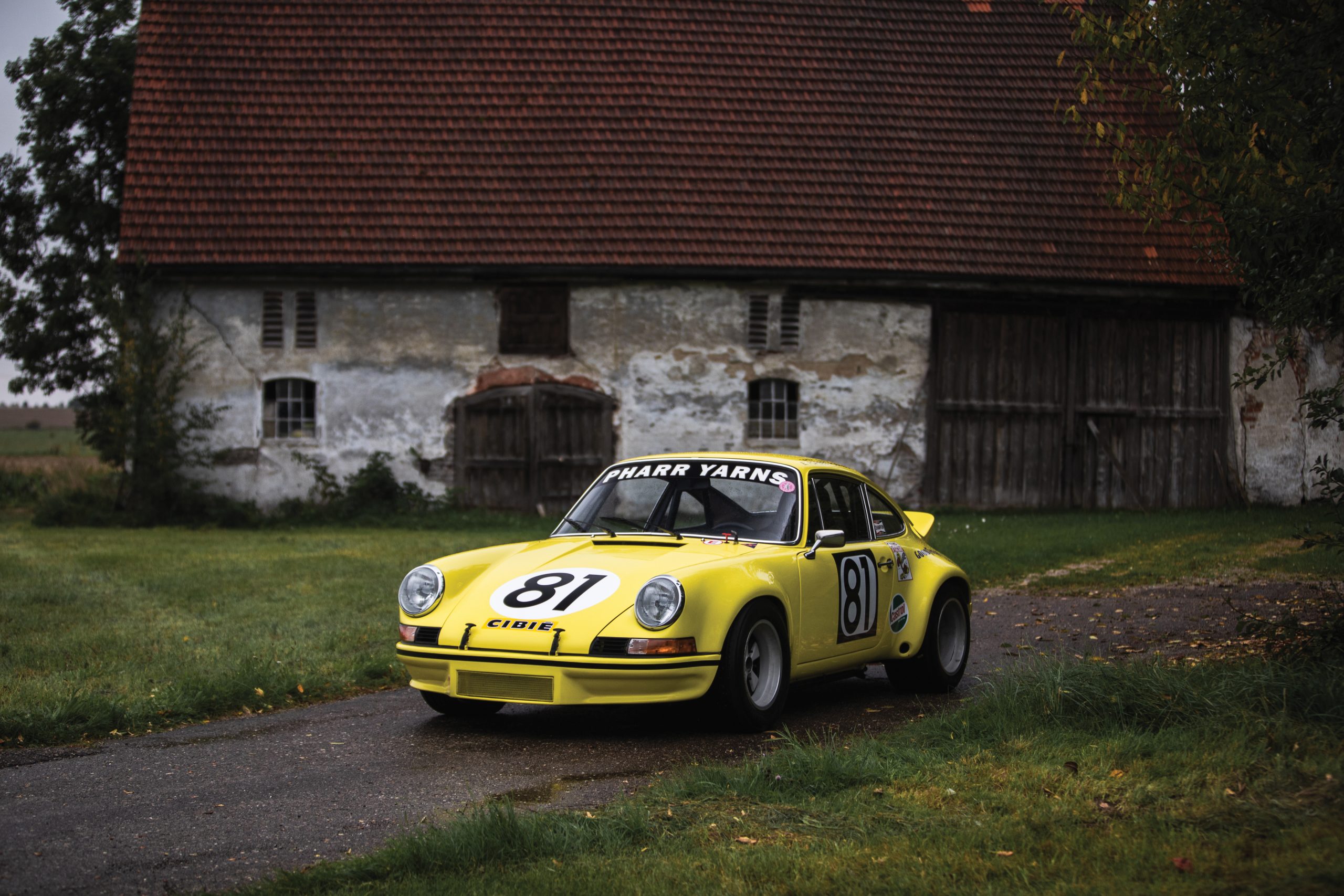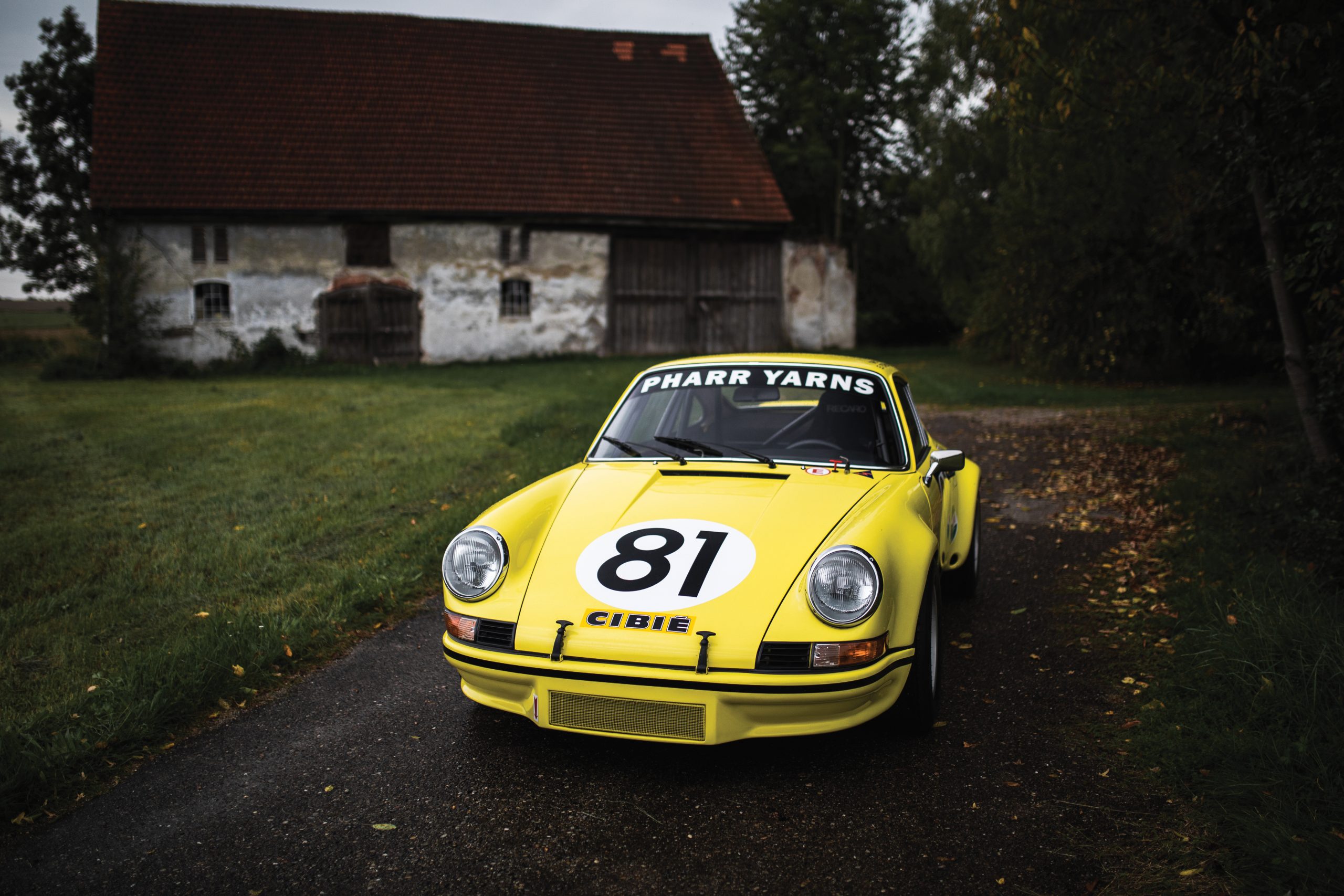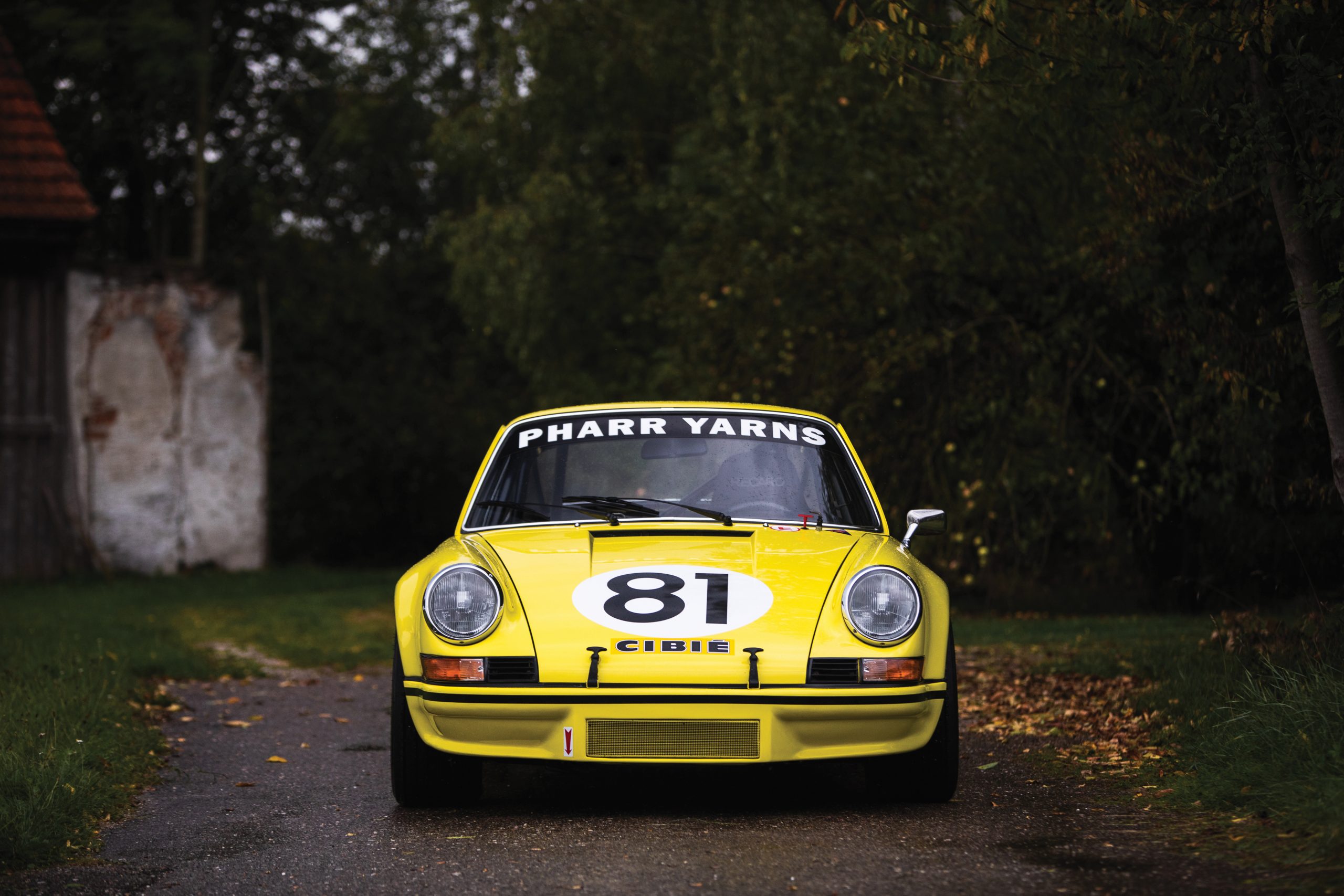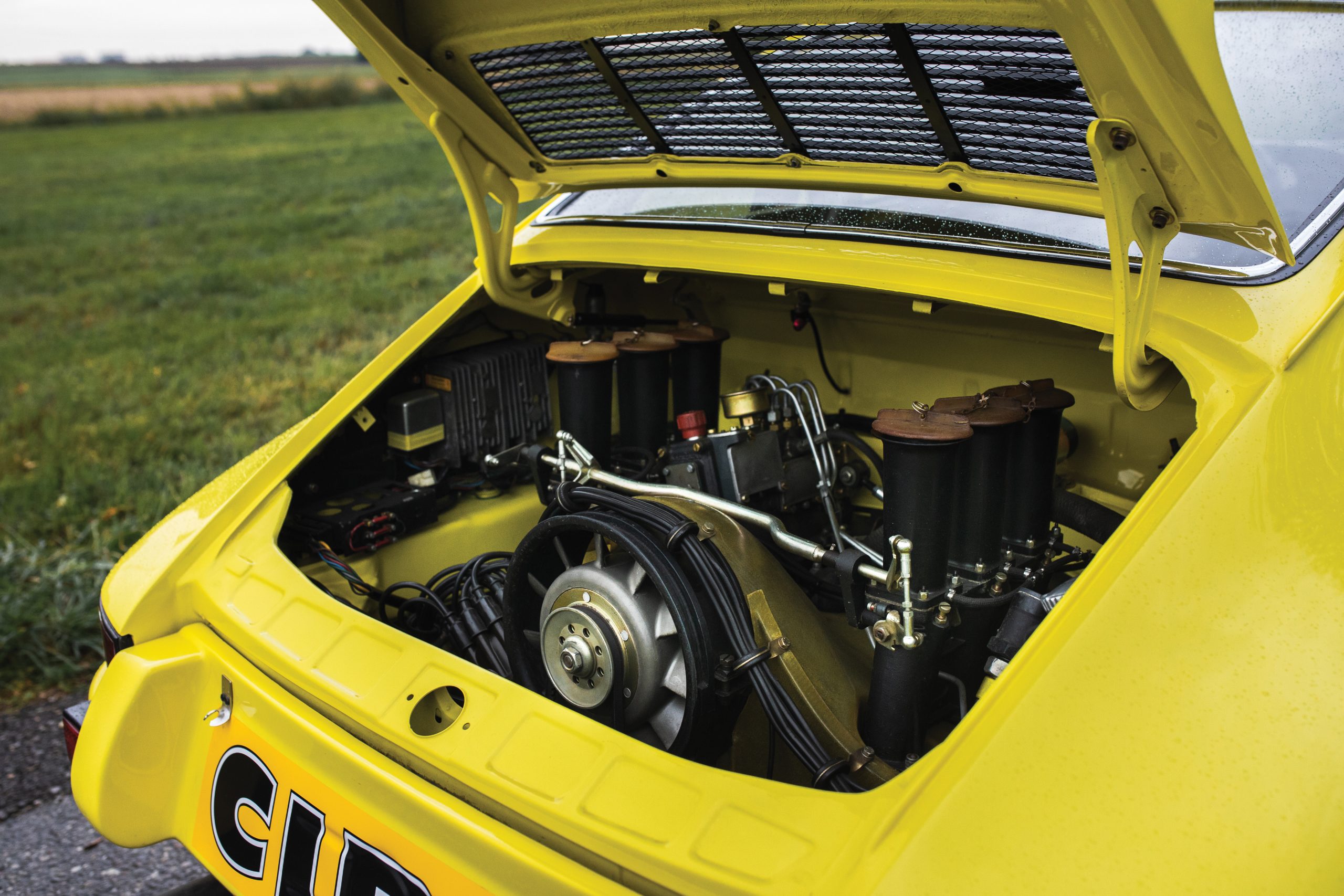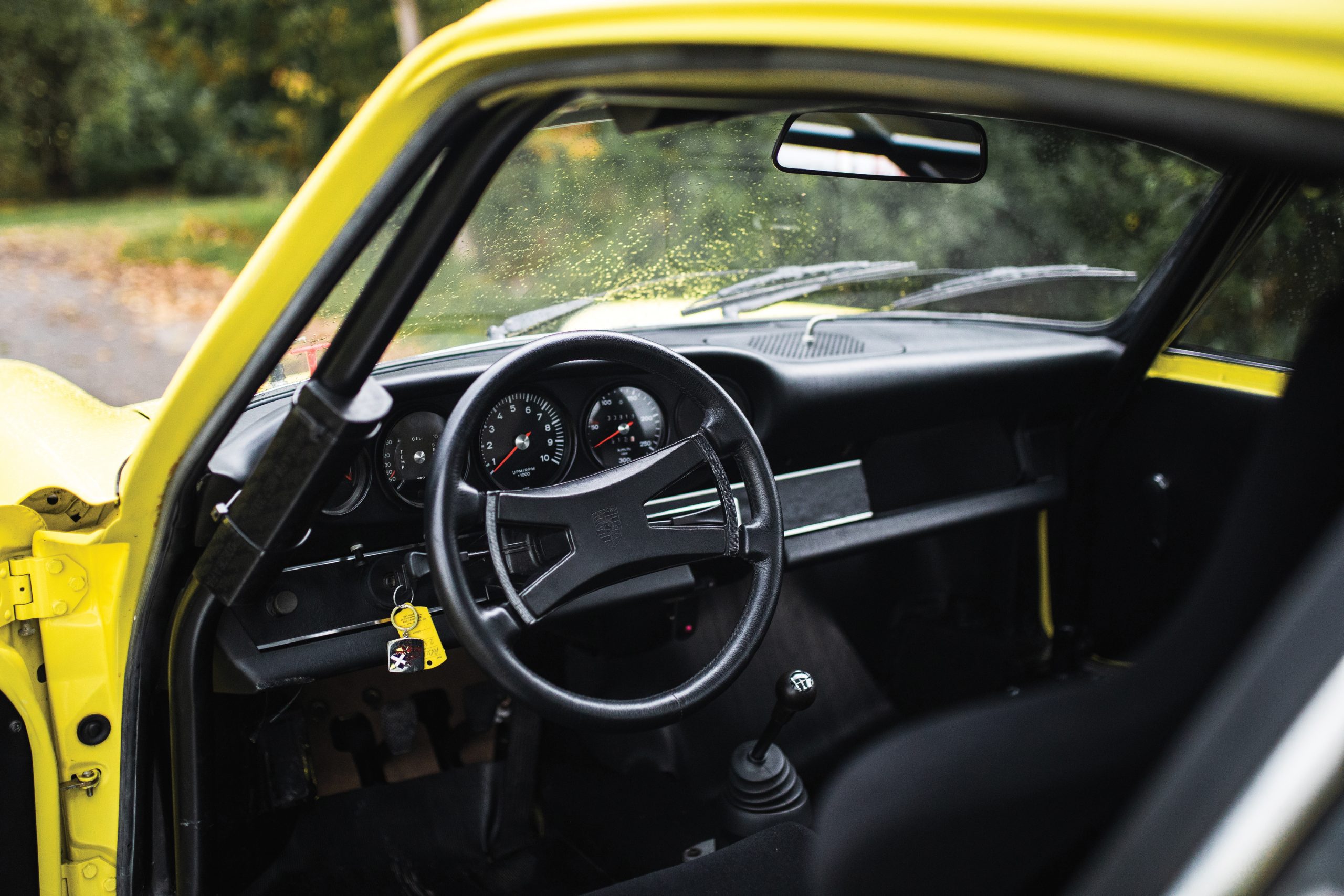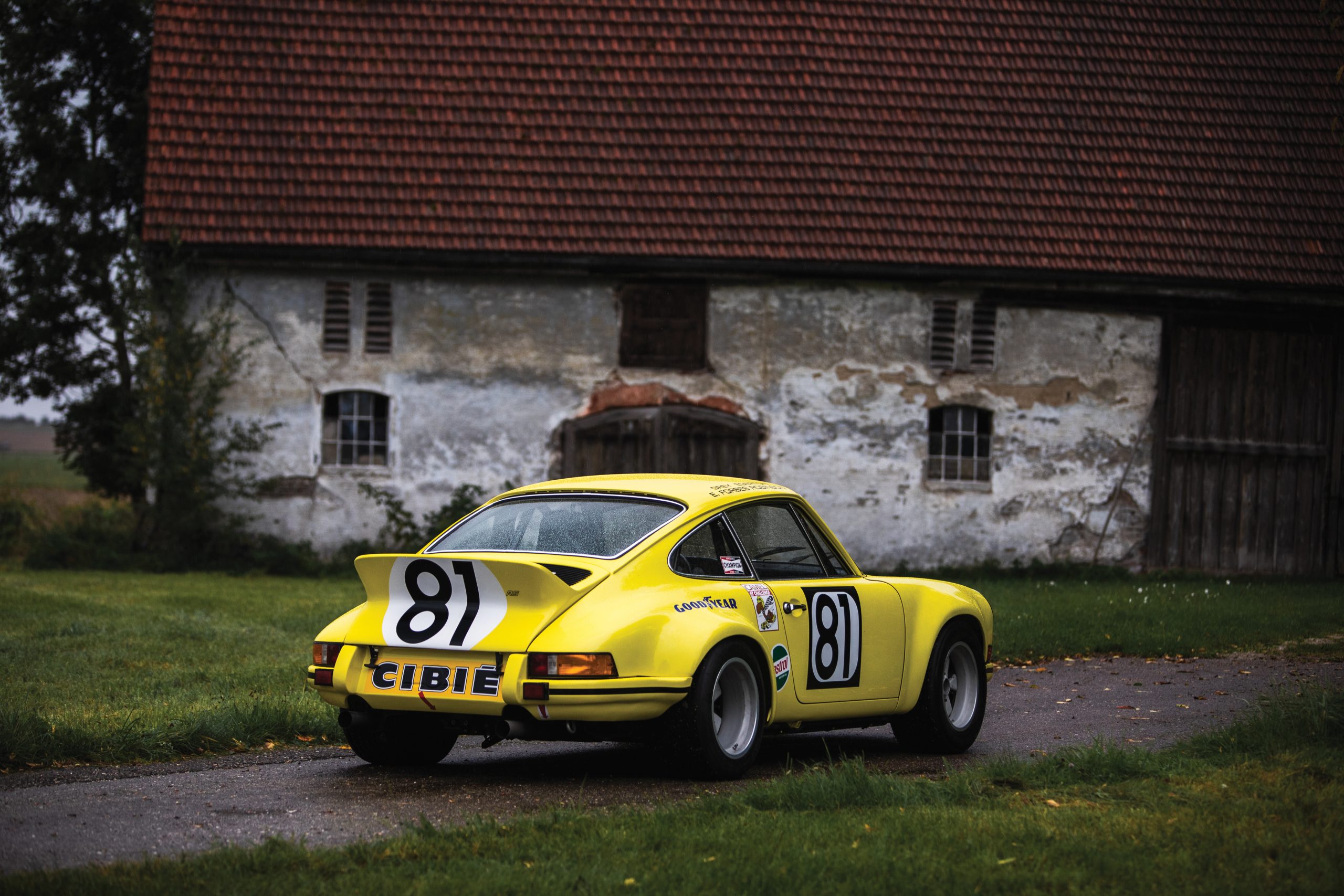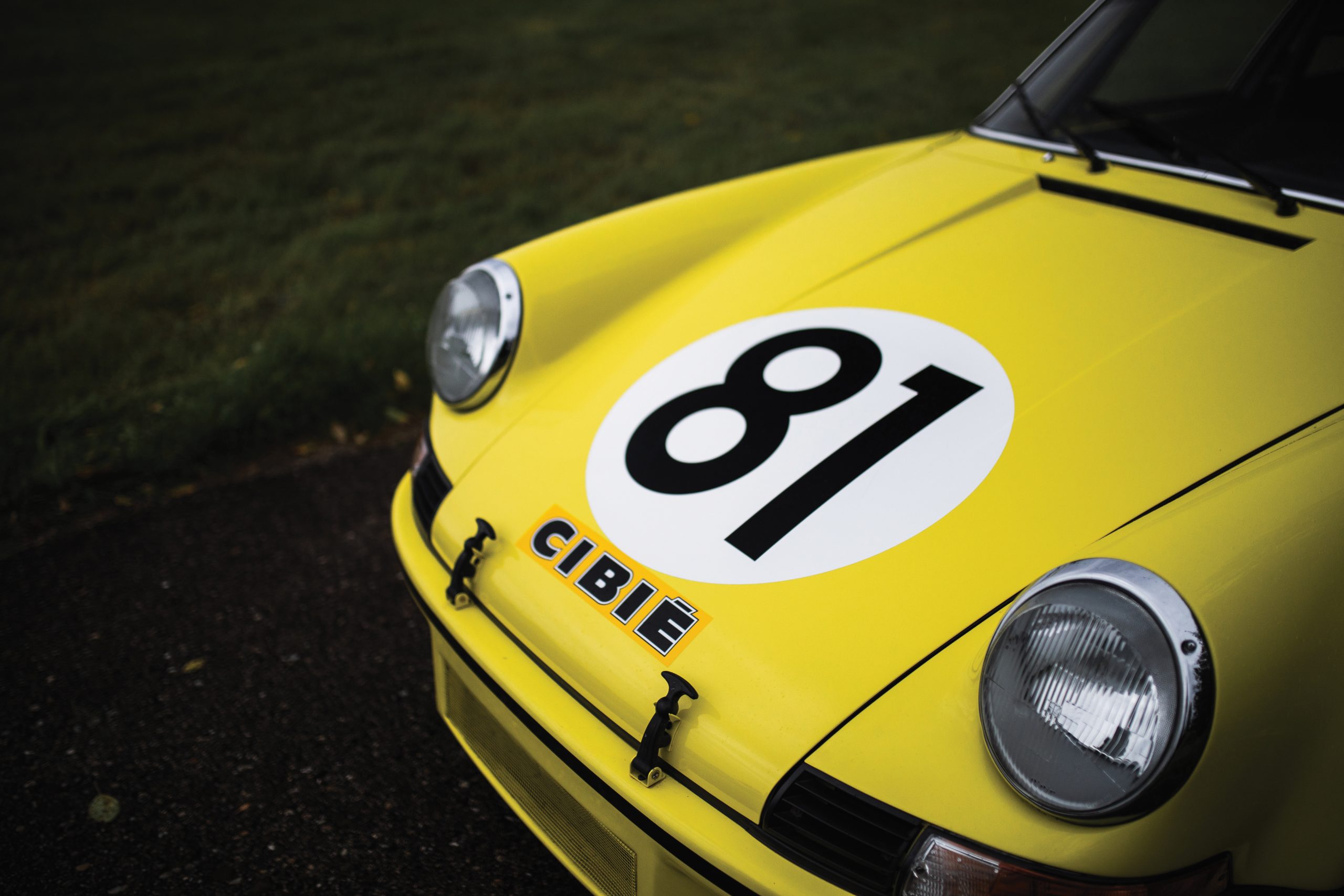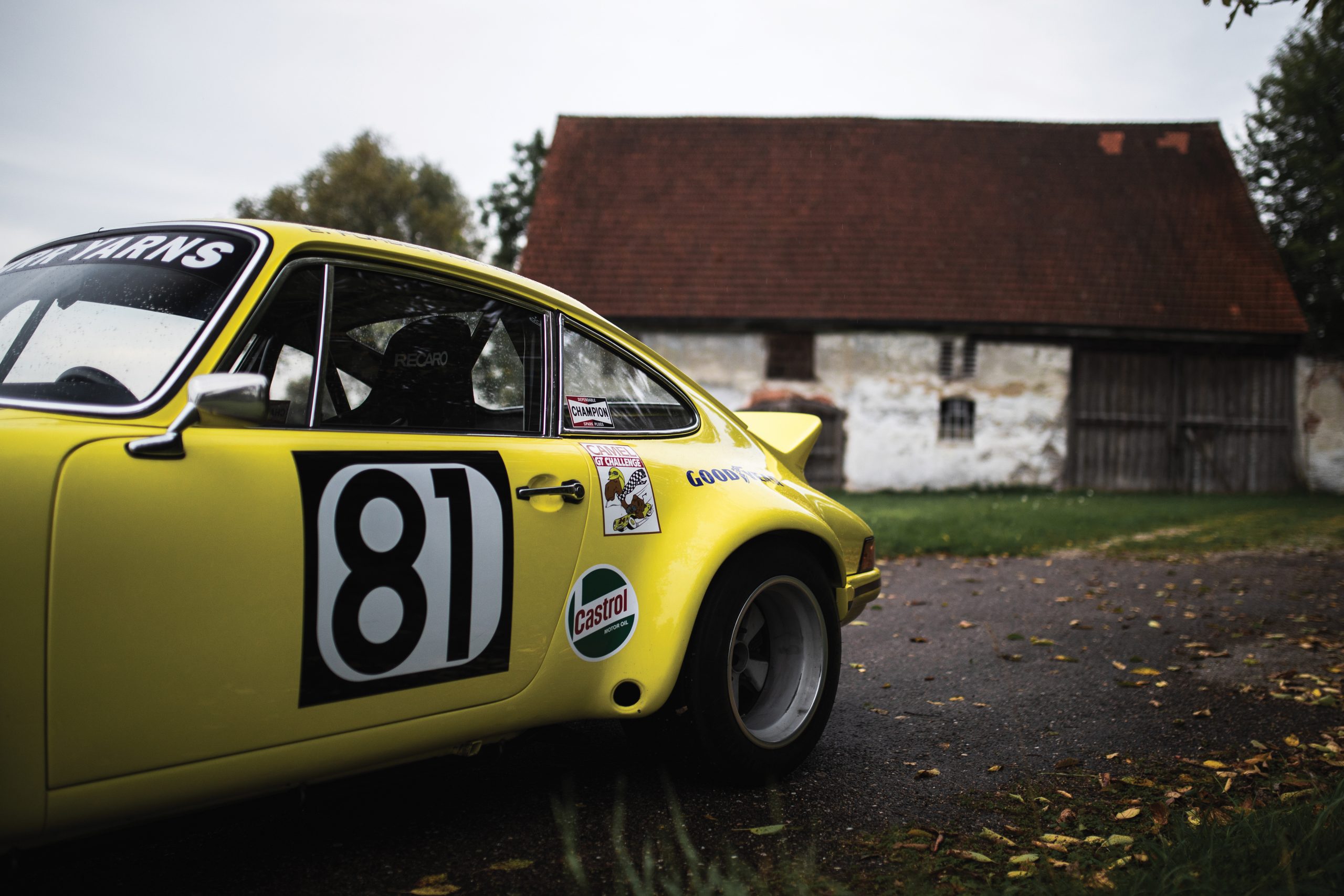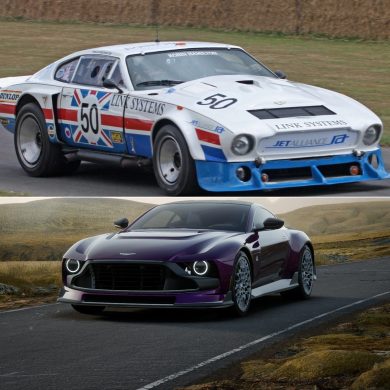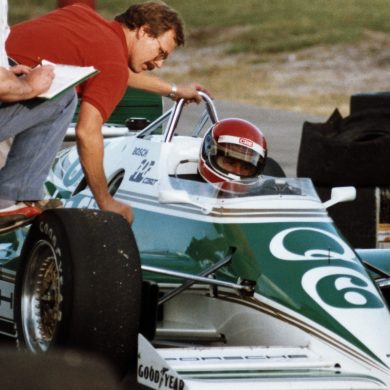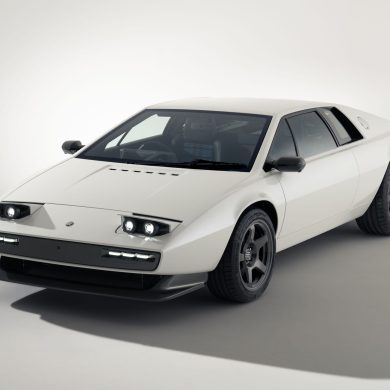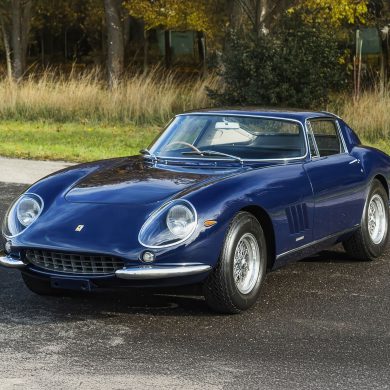Introduced in 1973, the RSR was a factory-built racing car based on the 911 chassis. The 2.8 RSR looks different from a standard 2.7 RS because of its massive fender flares, central oil-cooler air intake, and ultra-wide Fuchs wheels. While the wider wheels and arches combined with the low air dam to give the RSR a much more aggressive look, the conversion process was much more than just a bunch of tweaks, it was a serious engineering exercise.
At the heart of the RSR of course was an enlarged race engine. Porsche’s goal was to get as close as they could to the 3 liter class limit engine size. The cylinder bores were enlarged to 92 mm, giving a total volume of 2806 cc, and the compression was raised to 10.3:1. The cylinder heads were modified for larger valves and valve timing was that of the 906 sports racer. Bigger valves, twin-plug ignition, high throttle butterflies and extensive lightening of internal components contributed to an increase from the 210 bhp of the RS to over 300 bhp. That the RSR’s type 911/52 engine was able to produce a reliable 300 hp at 8,000 rpm was a huge accomplishment for Porsche engineers.
Porsche built just 55 examples of the original 2.8 RSR for the 1973 season, most sold to private racing teams. The RSR stood as the lightest, fastest, most powerful and most agile 911 ever to enter GT racing and the model immediately proved its worth in racing. The car won the first round of the 1973 Work Championship for Makes. It then followed up by capturing wins at the 24 Hours of Daytona, 12 Hours of Sebring, Targa Florio, and six of nine rounds in the 1973 European GT Championship.
Photo Source: RM Sotheby’s


